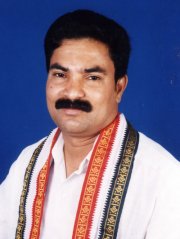
Mangalore, Aug 2: Even before the mortal remains of Bondala Jagannatha Shetty (45), who died in a road accident near Panemangalur on Tuesday night, was cremated at his native Shambur, conspiracy theories have started doing the rounds. It is a fact that Mr. Shetty had ruffled the feathers of the communal and fascist forces in the district through his outspoken views on secularism and human rights. He was also one of the leading contenders for the party ticket from Puttur constituency for the upcoming Assembly elections.
“I will reach in another couple of minutes,” Mr. Shetty had told his wife Swarnalatha just before he met the tragic end. He was returning from Mangalore after attending to a number of his prior commitments and was hardly two kilometers away from his home when the LPG cylinder-laden lorry changed track and rammed into his sports utility vehicle. Police have arrested the lorry driver, Kumar, a resident of Sakaleshpur, and produced him to court, which has remanded him to judicial custody. Although, there is no concrete evidence yet to lend credence to the conspiracy theories flying thick and fast, the developments preceding his untimely demise gives rise to suspicion.
Shetty was a livewire in the party circles even after stepping down as the president of the Dakshina Kannada district Youth Congress couple of years ago. He had contested as the party candidate in the 2008 Assembly elections losing by a narrow margin of 1,500 votes against BJP's Mallika Prasad. After his defeat, he had confined himself to Puttur assembly constituency. However, that did not deter him from taking on the powerful and the mighty whenever there was violation of law or justice. He always stood for the oppressed, the weaker sections of the society and would invariably speak his mind on issues closer to his heart.
Although he shunned limelight in the recent past, he used to convene press conferences whenever he had to give a reaction to any major development. A day before his death, he had spoken to the press and sought stringent action against those who attacked innocent men and women at a homestay in Mangalore. He had also demanded action against the people who were the real conspirators of the attack, indicating that the Sangh Parivar leaders were the mastermind behind the ugly incident. It is worth noting here that there had been several attempts on him earlier by his political adversaries.
Significantly, some senior Congress leaders have given vent to the conspiracy theory and demanded a probe into his death. Former Union Minister B. Janardhan Poojary, has gone on record saying the police department should conduct an inquiry in order to end speculation among the public. “Although it appears to be a road accident, many suspect that this could be a case of murder,” he said. Echoing similar sentiments P.V. Mohan, AICC member, said Mr. Shetty was a popular leader and the possibility of a conspiracy could not be ruled out.
Giving credence to the conspiracy theory is the recent move by the BJP government to withdraw the body guard that was provided to Shetty by the S.M. Krishna Government. “He had rubbed the antisocial elements on the wrong side. The fact that the gunman facility was withdrawn recently lends credence to the conspiracy theory. The government should conduct a thorough inquiry into the episode,” urged Congress district minority committee spokesman Nooruddin Salmara.
Whether or not Congress leaders step up their demand for a probe into his death, the party has lost a very energetic and dependable leader. He had also carved a niche in the field of education, culture and art. The little known fact about Shetty was that he had adopted the government highschool in Shambur and was instrumental in bringing name and fame to the institution. The huge turnout at the final procession and the funeral was a testimony to the popularity of Shetty, who had friends and supporters across the political spectrum.
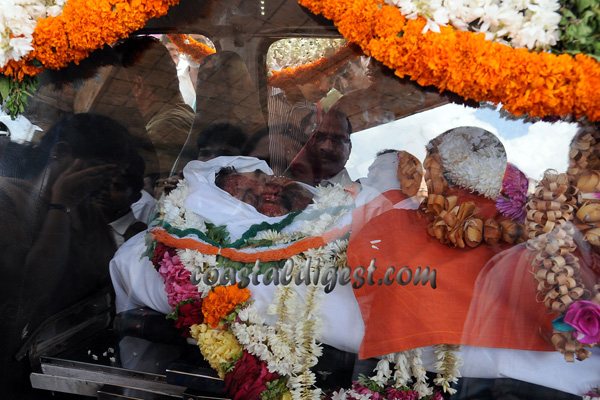
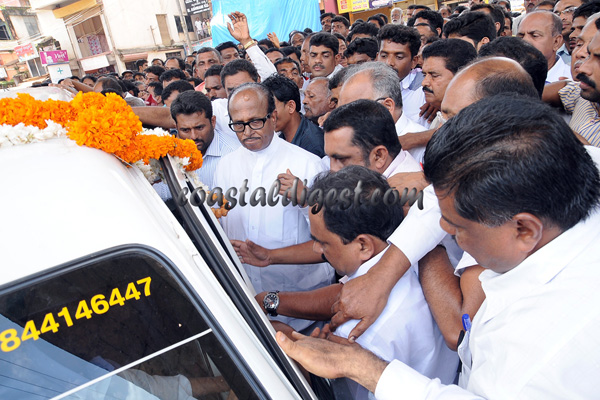
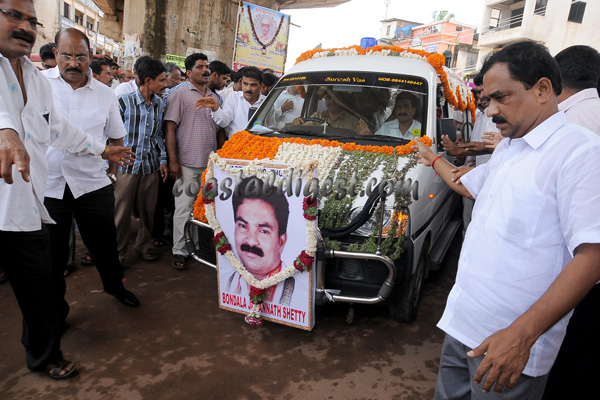
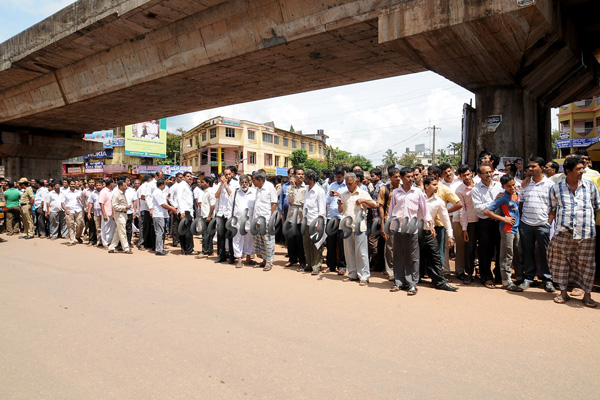







Comments
Add new comment